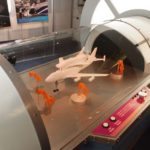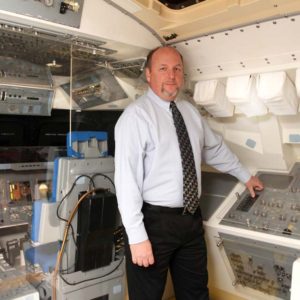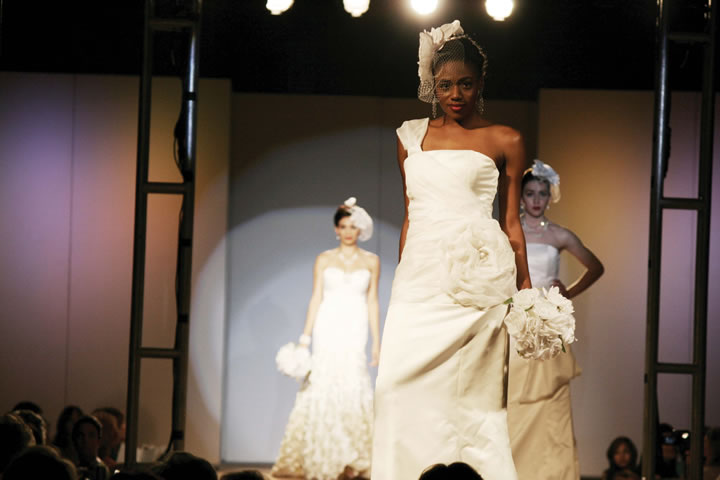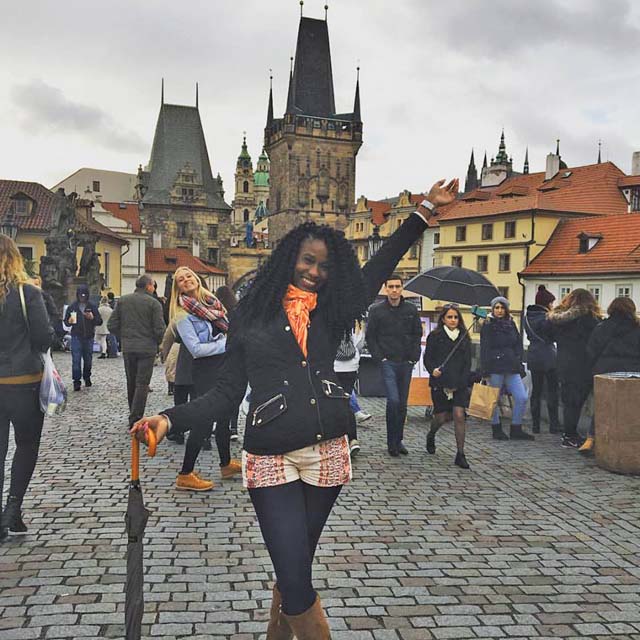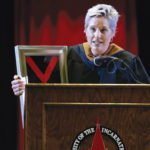
As a boy growing up in the ’60s at the height of NASA’s race to the moon, Paul Spana ’84 BA dreamed of suiting up in a metallic spacesuit and blasting off into deep space while strapped inside Apollo 11.
“I couldn’t wait until the next edition of Look or Life magazine came out to see the pictures of the moon,” he said. “I couldn’t get enough.”
Now, Spana doesn’t have to launch into orbit to satisfy his curiosity about space travel and far away galaxies. He has reached for the stars and today is the exhibits manager of Space Center Houston, which he declares is the best job on the planet.
“I’m not exaggerating when I tell you, my colleague and I get together once a week and remind each other how fortunate we are to be here,” he said. “We work alongside NASA, the astronauts and engineers. Just today, I had a meeting with the food scientists. We had a lunch of real space food.”
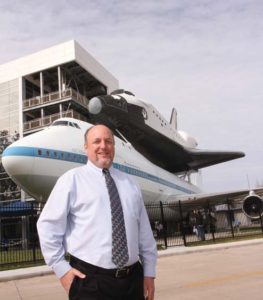
Spana in front of Independence Plaza.
Spana’s journey to becoming an exhibits manager began while at UIW, then Incarnate Word College, as an art major with a minor in anthropology.
“My botany teacher, Dr. Don McLain, inspired me to explore other career choices involving drawing skills,” said Spana. “This inspiration led me to explore the technical side of drawing, which led me to explore drafting and architectural design.”
After graduating, he accepted a temporary position at the Witte Museum, after he was contacted by fellow alumni Mimi Quintanilla ’78 BA, who was then museum school coordinator. This steered him to a new career path as he pursued a master’s in architecture from the University of Houston.
As exhibits manager, Spana researches, coordinates and brings to Space Center Houston – the official Visitor’s Center for Johnson Space Center – both permanent and traveling exhibits, some more than 5,000-square-feet. “We always have something new and fresh to offer,” he said. “I keep an eye out for those exhibits and look for ones that are appropriate for us and try to plan two to three years out.”
He learns about many of them by attending the Association of Science-Technology Centers conference each fall and has built a rapport with traveling exhibit coordinators throughout the country and Canada, as well as private exhibit museum companies.
“Over the years, I’ve built relationships with people who travel with those exhibits to the point where they call me and say, ‘We’re thinking about building a new exhibit and we want your input on it.’ Those relationships have helped me to be one of the first to get those exhibits here.”
Spana, who was previously director of exhibits for The Children’s Museum of Houston, has a hand in the design of all of the permanent exhibits.
“With smaller exhibits, I’ll design and find somebody to build them for us. I look for outside contractors who specialize in design and tell them this is the story I want to tell and this is how I want to tell it. They’ll help me design the exhibit, and then we’ll find a fabricator to build it.”
However, his most ambitious project to date, Independence Plaza, came five years ago when he was tasked with bringing a full-scale shuttle replica from Kennedy Space Center to Houston for permanent display.
“We had challenges such as how to get it into the bay, then across the street into Clear Lake,” he said. “I learned a lot about tides and moving things by ship. Unbeknownst to me, what I was learning from that project was setting the stage for something 100 times bigger.”
Spana explained that just as he and his team had finally managed to bring the shuttle to Space Center Houston and were about to build a tower so people could walk up to it, they received an important call from Johnson Space Center, letting the museum know they wanted to donate the 747 Shuttle Carrier Aircraft, which had done the majority of work piggybacking the shuttle. The plane was eventually flown to Ellington Airport some eight miles from the museum.
“I said, ‘Would you let me put the shuttle on top of it?’ They said you may have to just display it side by side. But I knew you can’t have a shuttle carrier without a shuttle on top of it. It lasted almost four years. My whole life was devoted to that project.”
Still, he was left with the challenge of getting the 747 from Ellington Airport to Space Center Houston. Thankfully, Spana said, Boeing agreed to take the plane apart into pieces that were small enough to move.
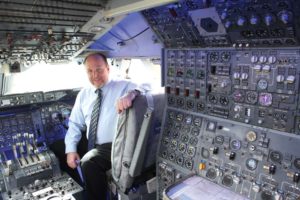
Spana in the 747 cockpit.
“It was broken into seven pieces,” he said. “Six were small enough to go onto an 18-wheeler. The largest piece was the fuselage which was 190 feet long. It went on top of a self-propelled, hydraulic trailer that had 88 wheels. It took two nights to move eight miles since they were only allowed to move at night.”
Once on site, exhibits were built inside the shuttle and the 747. “The shuttle was already designed to be an exhibit, so that was easy. I made some minor modifications to the structure of the shuttle so it could be on top of the airplane. The airplane had been completely stripped on the inside. It was just the skin and the frame. But in order to have visitors in there, I had to have a controlled environment for the comfort of the guests and to protect artifacts.”
Today, visitors are in awe of the finished display showing the 747 with the shuttle in the piggyback configuration just as it had been used by NASA to transport the shuttles for 30 years.
Incidentally, Independence Plaza was honored with two important accolades at the International Association of Amusement Parks and Attractions Expo Brass Rings Awards Ceremony in November. It was awarded the Impact Award and Best New Product for Displays and Sets.
“Independence Plaza has totally transformed Space Center Houston into something brand new,” the exhibits manager said. “It has put us on a whole new track with a whole new way of thinking.”
Since opening in 1992, Space Center Houston has welcomed more than 18 million visitors and hosts nearly one million visitors annually in its 250,000-square-foot educational complex, according to its website.
Working on large-scale projects, such as Independence Plaza, makes Spana feel like he’s landed on the moon. No doubt, it also makes his mother, Dr. Caroline Spana, professor emerita of nursing, proud. She also graduated from what was then Incarnate Word College and recently retired from UIW after 50 years teaching in the Ila Faye Miller School of Nursing and Health Professions.
“UIW has been a big part of my family,” he said. “I spent so much time there, and I remember my mom would come home and tell my dad stories about working there. The school is an extension of my home.”
By Rudy Arispe ’97 BA
Additional Photos
Video Content
Independence Plaza B-roll from Space Center Houston on Vimeo.
Independence Plaza B-roll from Space Center Houston on Vimeo.






